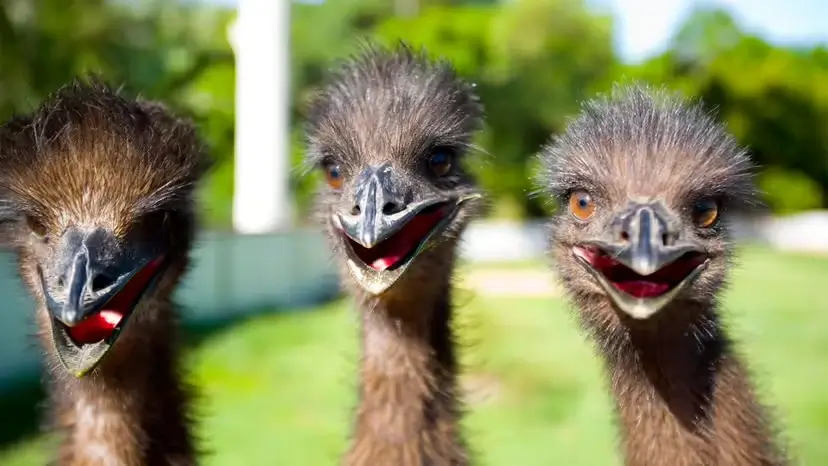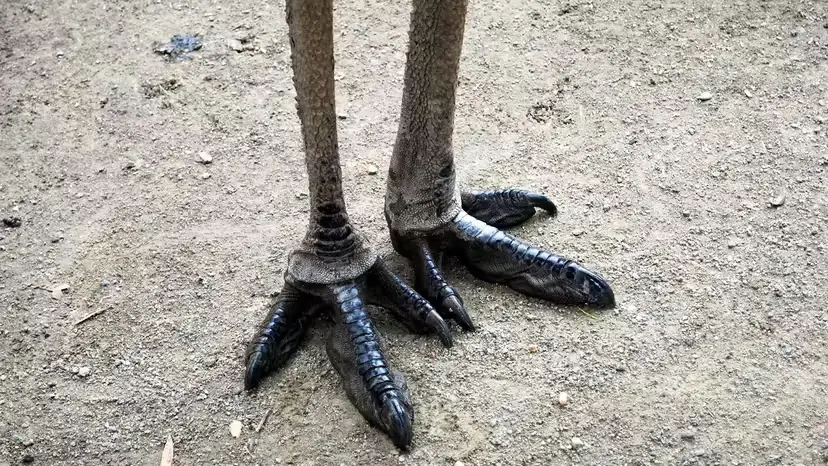Emus (Dromaius novaehollandiae) are lanky, long-necked icons of Australia—and the world’s second-tallest birds after ostriches. Gangly looks aside, they’re superb runners, devoted dads, and surprisingly adaptable survivors. Here’s a deeper, user-friendly guide that goes beyond the basics.

Both emus and ostriches are ratites—large, flightless birds with a flat, keelless breastbone. They share a similar silhouette: long legs, long necks, and impressive speed. But there are clean tells if you look closer:
Toes and traction. Emus have three toes built for grip and stability over scrub and sand. Ostriches are the only birds with two toes, optimized for high-speed sprinting across open savanna.
Wings and maneuvering. Ostriches carry long, expressive wings they use like rudders to pivot at speed and for courtship displays. Emu wings are tiny—about 2–4 inches (5–10 cm)—and not used for steering; emus rely more on their body lean and powerful legs to change direction.
Predator context. Ostriches evolved alongside large African predators (lions, hyenas, cheetahs), favoring instantaneous direction changes. Emus contend mainly with dingoes and birds of prey; adults usually outpace dingoes in open country.
Height and weight. Typical adults stand around 1.6–1.9 m (5.2–6.2 ft). Males commonly weigh 50–55 kg (110–121 lb); females average a bit heavier.
Feathers and camouflage. Emus wear a shaggy, double-shafted feather that traps air for insulation and disperses heat—handy in Australia’s temperature swings. Chicks hatch with striped down (black, brown, cream) that breaks up their outline in grass and leaf litter.
Top speed. On open ground, emus can clock ~50 km/h (31 mph) with a long, energy-saving stride.
Native range. Wild emus occur only in Australia, from eucalyptus woodlands and mallee scrub to arid shrublands and sandy plains. Historical island forms in Tasmania and King Island are extinct.
Nomadic habits. Emus are opportunistic wanderers. In good seasons, they disperse widely; in drought, they trek toward greener fronts, sometimes gathering in loose mobs. This roaming nature has periodically brought them into conflict with farmers—most notoriously the tongue-in-cheek “Emu War” of 1932, an attempt to cull crop-raiding emus that proved far more difficult than expected and led instead to strategic fencing across grain regions of Western Australia.
What they eat. Emus are omnivores. They graze seasonally on seeds, shoots, fruits, and flowers, and snap up insects and small vertebrates when available.
How they grind it. Like many ground-feeders, emus swallow gastroliths (small stones) to help the gizzard mechanically break down fibrous food.
Water strategy. Emus drink deeply when they can, but their physiology and diet help them cope with dry spells, supporting long walks between resources.
Breeding season. In Australia’s winter (June–August), males and females vocalize with deep grunts and resonant booms. After pairing, the female lays a clutch in a shallow nest lined with leaves, bark, and grass.
Incubation marathon. At that point, the male takes over completely—incubating for about 56 days without eating, drinking, or defecating, relying on fat reserves and an ultra-low activity state.
Solo parenting. After hatching, chicks are ready to walk and feed within 24–48 hours. Dad leads them to water and foraging sites, shields them from weather and danger, and remains the sole caregiver for roughly four months until they disperse.
Culinary use. Emu has been used as a food source by First Nations people for thousands of years and is farmed today for meat, oil, leather, and feathers. The meat is red, lean, and mild.
Giant emerald eggs. An emu egg is a dark emerald green, weighs ~450–650 g (1–1.5 lb), and equals roughly 10 chicken eggs. Beyond food, the shell’s layered color gradient makes it popular for decorative carving.
It depends—but treat with caution. Emus are often curious and people-tolerant, yet they’re large, powerful birds equipped with three-toed, clawed feet capable of serious injury if stressed or cornered.
Care requirements. They need space to roam and graze, secure 1.5–1.8 m (5–6 ft) fencing, weather-appropriate shelter, a balanced diet (commercial ratite pellets plus forage), and avian-experienced veterinary care. Regulations vary by region; always check local laws and licensing before considering ownership.
Individual personalities. Like parrots or corvids, emus show wide personality variation—some intensely curious, some aloof, some food-motivated, others social-seeking. Good management plans for both enrichment and respectful distance.
For people around emus. Give birds personal space, especially during breeding or chick-guarding. Avoid hand-feeding wild emus; it conditions risky proximity. Move calmly, avoid cornering, and be mindful of dogs around emus and vice versa.
For landholders. Where emus interface with crops or infrastructure, invest in well-maintained fencing, wildlife-friendly gates, and exclusion design that deters entry without trapping animals. Habitat buffers and alternative water points can reduce conflict.
Scientific name. Dromaius novaehollandiae
Status. Generally Common/Least Concern on the mainland; island forms historically extinct
Height and mass. ~1.6–1.9 m tall; ~50–60 kg typical adult
Speed. Up to ~50 km/h (31 mph)
Clutch and incubation. Large emerald eggs; ~56 days, male incubates and parents
Lifespan. Often 10–20 years in managed care; variable in the wild
Vocalizations. Deep grunts and booms (air sacs help amplify sound)
Footwork. Three large toes, strong tendons, and long legs for efficient distance travel

Emus may look a bit goofy at first glance, but they’re brilliantly adapted: heat-tolerant, fuel-efficient runners; meticulous fathers; and resilient foragers across one of the world’s most punishing continents. The more you learn about them, the more that “gangly” silhouette reads like what it is—a body built for Australia.
animal tags: emu
We created this article in conjunction with AI technology, then made sure it was fact-checked and edited by a Animals Top editor.